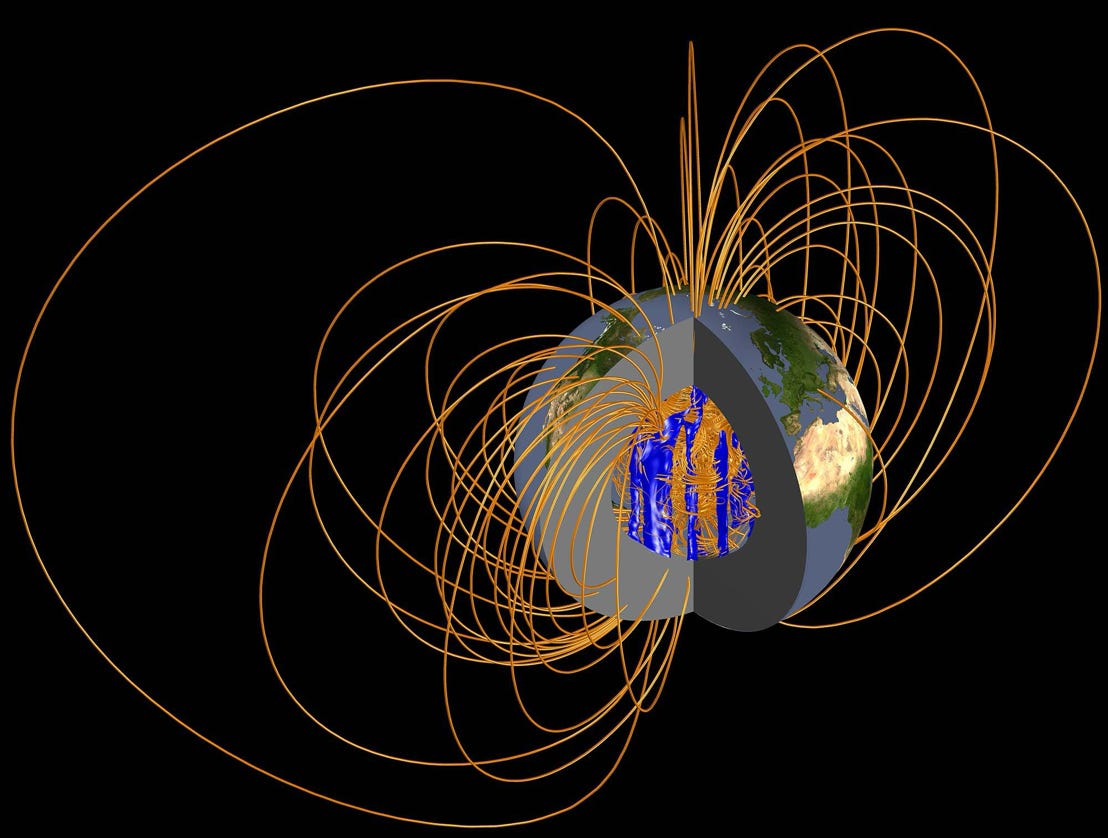April 2019
The Earth’s magnetic field experiences unpredictable, rapid, and intense anomalies that are known as geomagnetic jerks. The mechanisms behind this phenomenon had remained a mystery until advanced numerical geodynamo simulations could simulate the rapid hydromagnetic wave dynamics that causes these anomalies. This research was published in Nature Geoscience on 22 April 2019.
Aubert, J. and Finlay, C.C.: Geomagnetic jerks and rapid hydromagnetic waves focusing at Earth’s core surface, Nature Geoscience 12, 393-398, 2019, doi: 10.1038/s41561-019-0355-1
